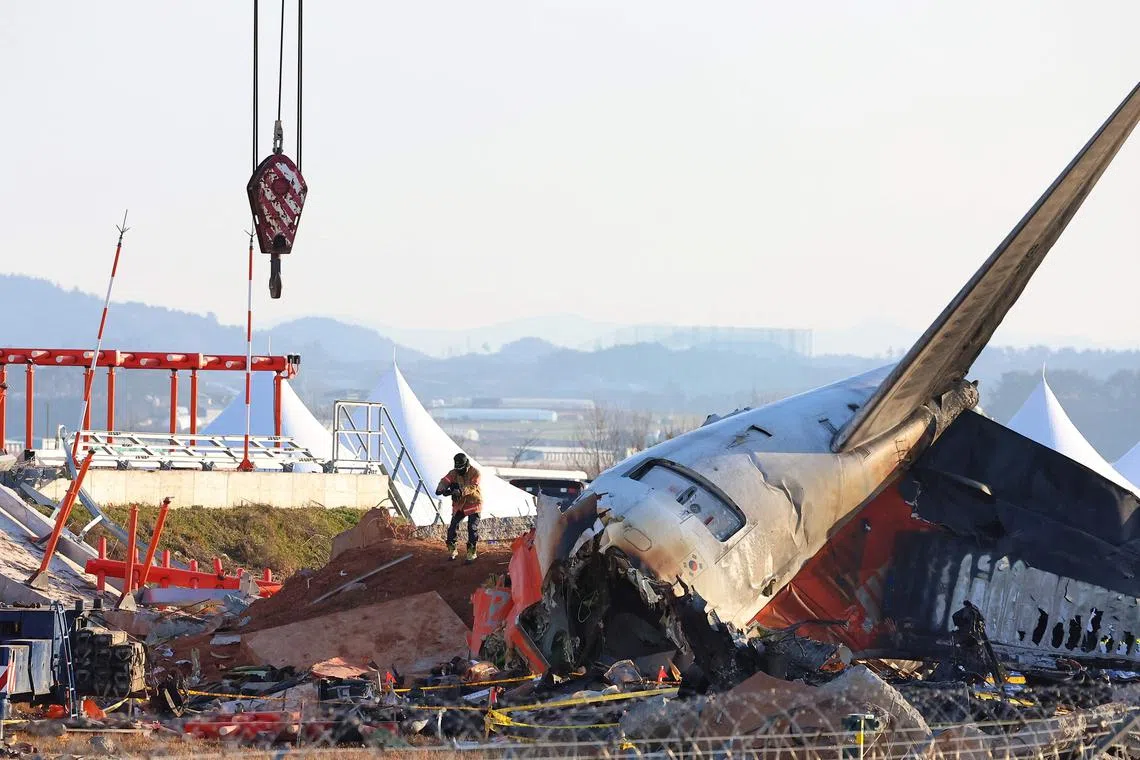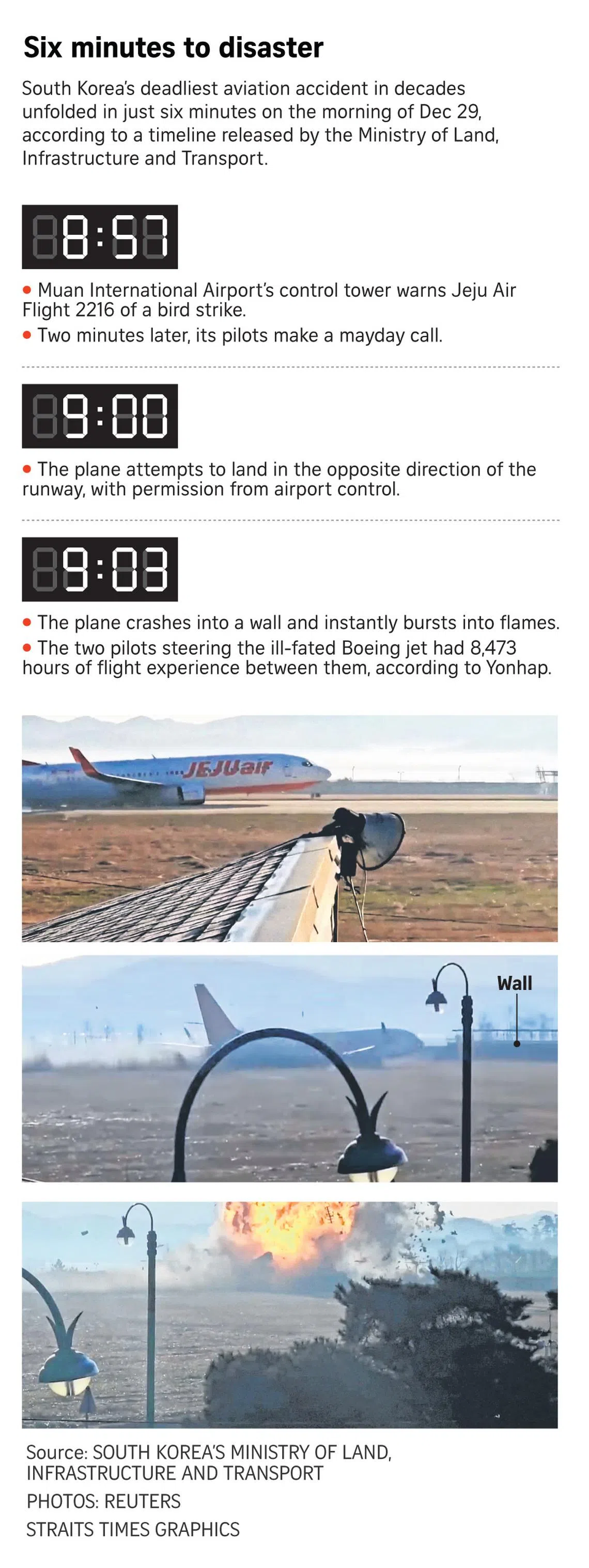Engine maker GE joins South Korean probe of fatal plane crash
Sign up now: Get insights on Asia's fast-moving developments

The ministry launched the inspections following the Dec 29 crash of a Boeing 737-800 operated by Jeju Air that killed 179 people.
PHOTO: AFP
Follow topic:
SEOUL – GE Aerospace, whose joint venture made the engines of the Boeing airplane that crashed in the deadliest aviation disaster on South Korean soil, joined the investigation as Seoul extended by a week special inspections of all 101 Boeing 737-800 jets.
The Transport Ministry extended to Jan 10 its inspections following the Dec 29 crash of a Boeing 737-800 operated by Jeju Air
“Investigators are in the process of probing the cause of the accident by piecing together a puzzle,” he added.
The inspections had initially been set to wrap up on Jan 3, but another ministry official said further checks would look into matters such as whether airlines spent sufficient time on maintenance and secured parts for repairs.
Video images on social media appear to show smoke emerging from the plane’s right engine in the lead-up to the crash.
The Dec 29 flight from Bangkok to the south-western county of Muan belly-landed and overshot the runway at the regional airport, exploding into flames after hitting an embankment.
The ministry has said it would examine engines, maintenance records and landing gear on all 737-800s, with serious violations leading to suspension of an airline’s operations.
The plane’s engines are produced by GE Aerospace’s CFM International joint venture with Safran.
A media representative for GE Aerospace did not immediately respond to an e-mailed question from Reuters about the investigation.
The addition of a GE representative takes to 23 the size of the investigation team, including 12 Korean investigators and US representatives from Boeing and the US National Transportation Safety Board.
While the cause of the disaster is still unclear, the crash could add to headaches faced by Boeing as the planemaker battles to restore the trust of customers following two fatal 737 Max crashes, a mid-air panel blowout and a seven-week strike.
Unanswered questions include why the aircraft did not deploy its landing gear and what led the pilot to apparently rush into a second attempt at landing after telling air traffic control the plane had suffered a bird strike and declaring an emergency.
South Korea’s investigation team said two of its members would leave for the US with the flight data recorder recovered on Dec 30 to analyse critical data with the US National Transportation Safety Board.
Mr Joo expected investigators to finish transcribing the cockpit voice recording from the doomed aircraft in the next several days, making a decision later on disclosure of the transcript.
The Transport Ministry held an emergency meeting with chief executives of 11 airlines, including top-ranked Korean Air Lines and Asiana Airlines, to discuss ways to beef up aviation safety.
South Korean acting President Choi Sang-mok on Jan 3 urged investigators to work swiftly to collect evidence from the crash scene and analyse data from the cockpit voice recorder.
The police said on Jan 2 that they were searching Jeju Air and the operator of Muan International Airport, and banned Jeju Air chief executive Kim E-bae and another unidentified official from leaving the country.
Investigators plan a special inspection of the location and materials of the airport landing system at airports elsewhere in South Korea by Jan 8.
Safety experts said the embankment, designed to prop up the navigation system that helps pilots make safe descents, was too rigid and too close to the end of the runway.
Investigators will analyse data on 107 mobile phones recovered from the crash site, including text messages, for clues to what happened before the crash, Yonhap News said. REUTERS


